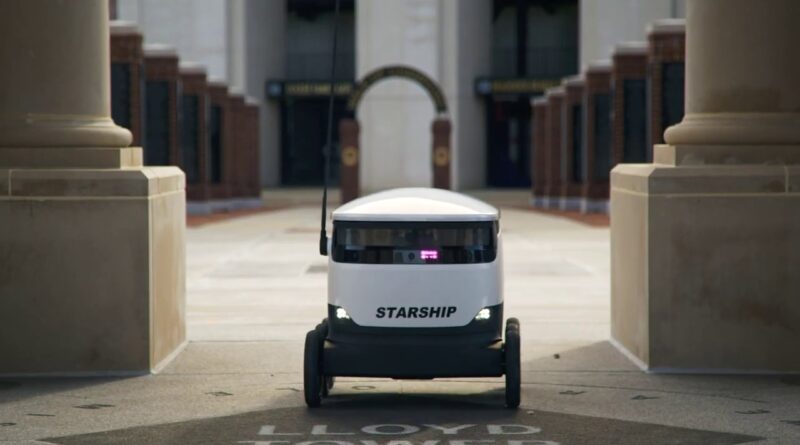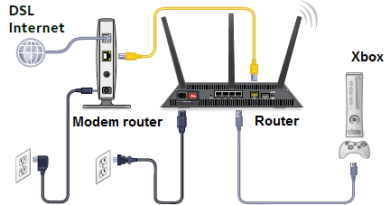AI Delivery Robots: The Future Of The Post Office?
With the rise of e-commerce, the postal service is facing an uncertain future. This is particularly true in countries where e-commerce is growing rapidly, like China. One possible solution to this problem is the use of delivery robots. These have a number of advantages over traditional postal service methods. They are fast, they are reliable, and they do not require any human interaction once they are deployed. They can even operate autonomously in some cases. The use of delivery robots could mean the end of traditional postal service in certain countries. If you’re worried about the future of the postal service, this is an important topic to consider.
The History of Delivery Robots
The History of Delivery Robots:
These are recent inventions and are not very well known. However, they have been in development for a few decades and have the potential to change the way we do our postal services.
First developed in 1985, delivery robots were not very successful. They were slow and had trouble navigating around obstacles. However, over the years they have improved significantly and now there are several different types of delivery robots available.
One of the most popular delivery robots is called Parcel robotaxi. It was designed by a company called Starship Technologies and was first released in 2014. Parcel robotaxi is capable of moving around easily and can navigate through tight spaces. It is also able to recognize different objects and can avoid them accordingly.
Other popular delivery robots include the UBT robot from Japan, which was designed by a company called Motohiro Endo, and GATE from Germany, which was designed by a company called iRobot. Both of these robots are capable of moving quickly and reaching high speeds. They also have sensors that allow them to detect obstacles and avoid them accordingly.
The Advantages of AI Delivery Robots
There are a number of advantages to having delivery robots perform the task of delivering packages and letters. For one, they can move quickly and efficiently through large crowds, avoiding potential collisions. Additionally, many delivery robots are equipped with sensors that help them navigate their way around objects, including people and other vehicles. This makes them much safer than human postal workers when it comes to transporting mail. In some cases, delivery robots have even been known to make more efficient use of postage stamps than humans do, saving the postal service money in the process.
Disadvantages
A recent report by the McKinsey Global Institute predicts that half of all US jobs will be displaced by automation over the next 15 years. This is a worrying prospect for consumers, who may see prices for goods and services increase as businesses replace human workers with robots. But what are the potential drawbacks of the widespread use of AI robots?
First and foremost, AI delivery robot would need to be extensively trained in order to carry out their tasks effectively. If their programming were faulty, they could cause significant damage or injury to themselves or others. Additionally, there is always the risk that these machines might malfunction in unpredictable ways, potentially leading to disaster.
Another potential disadvantage of using AI delivery robots is that they could lead to increased congestion on city streets. As businesses replace human employees with robotics, there will be an increased demand for parking spaces and shipping space in warehouses. This could lead to a rise in traffic congestion and air pollution, both of which would be detrimental to public health.
In conclusion, while there are many advantages to using AI delivery robots in future postal systems, there are also many potential drawbacks that must be considered carefully before implementation.
The Future of AI Delivery Robots
The future of AI delivery robots is coming, and the post office may not be ready for it.
There are already these are in use in a number of countries, including China, Japan, and the United Kingdom. These robots are used to deliver packages and food, and they’re becoming more popular all the time.
Delivery robots are already efficient workers. They can travel long distances quickly and reliably, and they don’t require a lot of supervision. That means they could be a great option for the post office.
There are a few things that the post office needs to do in order to make sure that they are an effective option for it. First, it needs to invest in technology that can handle these machines safely. Second, it needs to create systems that can automatically route deliveries around obstacles and keep them on schedule. Finally, it needs to develop policies that will allow these machines to operate effectively in the post office environment.
Conclusion
It’s no secret that the post office is in trouble. With the rise of online shipping, and the proliferation of e-commerce, the mail carrier seems to be on its last legs. But could AI delivery robots be the solution? In a recent article for CNBC, reporter Madeline Fuhrman argues that it may well be the answer to saving the post office. The technology exists today, she reports, and while there are some kinks still to be worked out (namely safety concerns), if properly implemented, they could revolutionize postal service as we know it. If you’re interested in learning more about how this technology might change our post-office future, read Fuhrman’s article here.
Read more for WPC 2022 Live.




